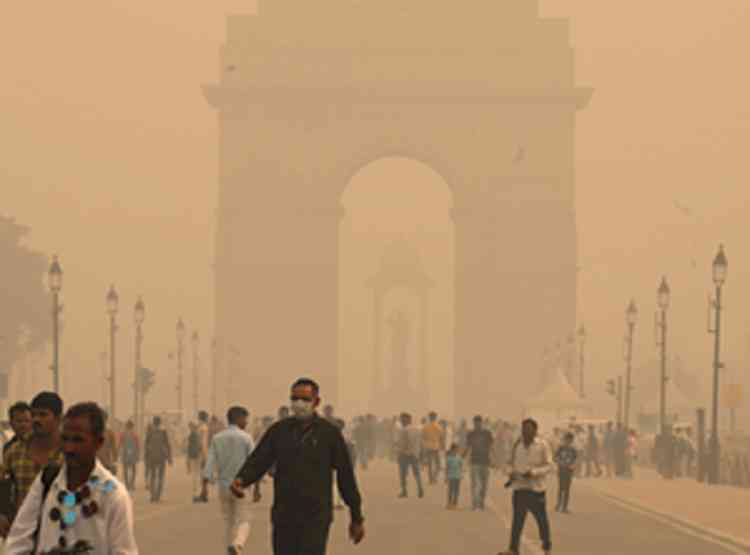Explainer: Punjab, Haryana see less farm fires, but Delhi needs action plan to curb pollution
A new analysis using the NASA Earth VIIRS data to count farm fires and wind and temperature profile data from the Central Pollution Control Board (CPCB), has revealed that there was 47.8 per cent reduction in farm fires in Punjab and 38.04 per cent in Haryana between 2022 and 2023 from October 1 to November 5.

Chandigarh, Nov 7 (IANS) A new analysis using the NASA Earth VIIRS data to count farm fires and wind and temperature profile data from the Central Pollution Control Board (CPCB), has revealed that there was 47.8 per cent reduction in farm fires in Punjab and 38.04 per cent in Haryana between 2022 and 2023 from October 1 to November 5.
But researchers warn that emissions from human-induced activities in the national capital have to be controlled strictly at source to reduce the influence of meteorology on the air quality.
Sangrur has emerged as the highest performing district in Punjab with 46 per cent reduction, where fire count was 4,287 in 2022 and is 2,295 in 2023.
In Haryana, Kaithal with 591 fires in 2022 ranked lowest and Fatehabad with 312 in 2023.
Analysing the wind trajectory data reveals a strong correlation between the wind direction originating from Punjab and Haryana and the resulting pollution levels in Delhi.
Wind carries pollution from Punjab and Haryana to Delhi 81 per cent of the time, based on the wind trajectory for October 2023.
In Punjab, as the data compiled by researchers of New Delhi-based Climate Trends, there were 27,401 farm fire incidents from October 1 November 5, 2022.
This year the total count during this period was 14,255, a reduction of 47.8 per cent. In Haryana, the total count during this period was 2,978 in 2022, which fell to 1,845 in 2023, a fall by 38.04 per cent.
According to the researchers, they have found that 54 per cent and 27 per cent of the time the wind carries pollution from Punjab and Haryana, respectively, leading to an increase in pollution levels in Delhi.
This correlation is likely due to the peak of fire incidents in Punjab and Haryana resulting from crop burning.
“For every additional fire incident, we can expect an increase in PM2.5 levels of 12.44 units. This equation quantifies the relationship between fire incidents and PM2.5 levels, indicating that as the number of fire incidents increases, PM2.5 levels tend to increase as well,” say researchers.
Aarti Khosla, Director, Climate Trends, told IANS: “Air pollution in Delhi is again hovering in the severe to emergency category with AQI levels crossing 400. Our analysis shows the delicate balance of wind speed, year-round air pollution, and seasonal stubble burning all have a role to play in creating this annual cocktail of noxious gases.
"Eighty-one per cent of the wind in Delhi these days is from Punjab and Haryana. While the farm fires data from Punjab and Haryana reveals a substantial reduction by 47.8 per cent and 38.04 per cent, respectively, against data for October 2022, but since volume of wind from the region is so high, it brings the undesirable impact of heavy pollution.
“We can also clearly see the meteorological impacts with wind breeze having a big role to play in combination with local sources -- construction dust, traffic pollution and small-scale industries.”
She said while farm fires and festivities are often the trigger for high air pollution in Delhi during October-November, year-round polluting sources of power plants, industries, traffic and construction have to be managed to find any meaningful results.
“Also rainfall, wind speed and temperatures impact regional and local air pollution levels. Emissions from human-induced activities have to be controlled strictly at source to reduce the influence of meteorology on the national capital’s air quality,” Khosla added.
--IANS
vg/ksk/


 IANS
IANS 








